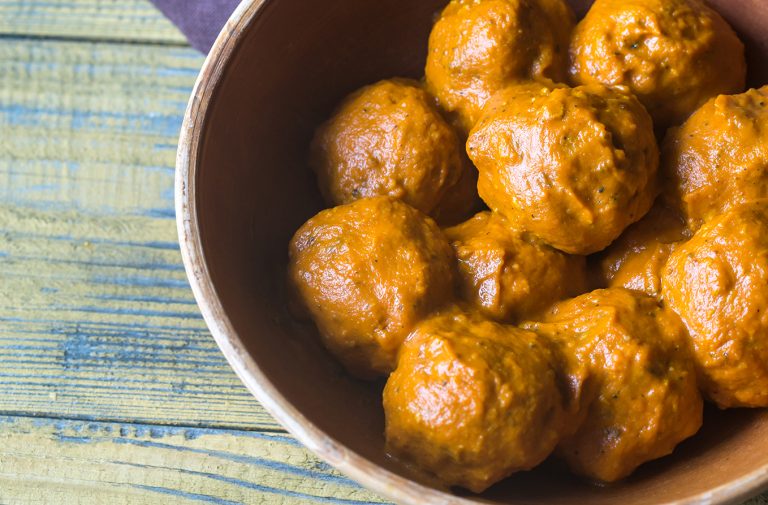
Perfect Pairings: Drinking with curry
To many, quenching thirst while knocking back a Ruby Murray means a pint (or two…or more) of lager. This decades-old British institution does little for the food, and the usual suspects from the bar aren’t improved by spice-laden food. Luckily, sophisticated pairings are easily found, from iced Indian classics to more refined ale options. Lassi…
Keep this recipe for later

To many, quenching thirst while knocking back a Ruby Murray means a pint (or two…or more) of lager. This decades-old British institution does little for the food, and the usual suspects from the bar aren’t improved by spice-laden food. Luckily, sophisticated pairings are easily found, from iced Indian classics to more refined ale options.
Lassi
This yoghurt-based drink – a traditional way to keep cool and fed on the Subcontinent – bursts with taste combinations, a world away from bland beer. Easiest to find in the UK is the sweet form, often flavoured with rosewater, sugar and fruit juices; mango lassi conjures up tropical sojourns to India. The savoury version, known as chaas, is thinner, with added salt and flavour from roasted ground cumin, or ginger, and more. But the sweet version, most popular in the Punjab region, cuts through the spiciest of curries as well as working as a cooling dessert. Recipes for homemade lassi are can be found online, with a good quality diary foundation (whether using buttermilk, or Greek yoghurt, or whatever) key to the taste – just be sure to make nice with a greengrocer who can save you the sweetest mangoes.
Whisky
Supping a dram while feasting on Indian grub has become a trend over the last few years, with many restaurants – led by pop-ups and especially prevalent in Birmingham – melding complex whiskies with rich flavours. Pairing Scotch walks a similar line to matching wine: delicate flavours pair well with single malts, while spicier booze goes with stronger flavours. An Indian whisky produced in Goa, Paul John Classic Select Cask, has a light touch of citrus and a sweeter finish that works well with seafood. For something cooked in a tandoor, the Ardmore 2010 – with only 262 bottles available from an ex-bourbon cask – is a fine choice: soft caramel and tropical fruits on the nose, with a floral smoky finish.
IPA
Don’t write off beers completely; make a clever choice and you could discover perfect bedfellows. Indian pale ales, the craft brewer’s favourite and historically linked to the English in India, have the range to suit a number of dishes: American-style IPA slices through creamy dishes, while a balanced English IPA (like the boozy 7.4% Meantime) will help soothe a burn – even if it feels worse at first. Python IPA, a double-hopped beer from the organic Little Valley Brewery in West Yorkshire, has a strong malty taste that stands up well against a hearty curry, but better still is their Ginger Pale Ale: fresh, light and with ginger (hand-peeled at the brewery) bubbling in the background.
Wine
Uncorking a bottle of wine with Indian food can be hit and miss. While wine lists have expanded in most restaurants, the presence of decent sommeliers has not, so it is a good idea to know basic matching. With reds, avoid anything full of tannins (the bitterness will overpower any subtle flavours in the food) and opt for something light. And as food gets spicier, a white – crisp, chilled and dry – or even bubbly could be better for the table. Australian ripe blends or spätlese rieslings have enough acidity and sugar to be your go-to. If you’re looking for something from India, award-winning sauvignon blanc from KRSMA Estates vineyard – on the slopes of Hampi Hill in northern Karnataka – has a tropical fruit nose and a long lingering finish.
Cider
Cider needn’t be relegated to BYO plonk from a corner shop; it stands as a viable alternative to lagers, especially if you choose fruity upmarket varieties with a little fizz and a sweetness matched to chutneys. Avoid anything too fizzy, though, or it will interfere with any heat in the food. Between their cider house in Suffolk and a kitchen in Mumbai, Aspall has developed Bhai, a straw-coloured cider with a tangy finish that yearns to wash down spicy food. The eclectic blend is fermented with Champagne yeast, and balanced with jaggery (a traditional non-centrifugal cane sugar) from the plains of India. If your meal is on the mild side, choose a dry cider – something based on dessert apples is worth a try.





